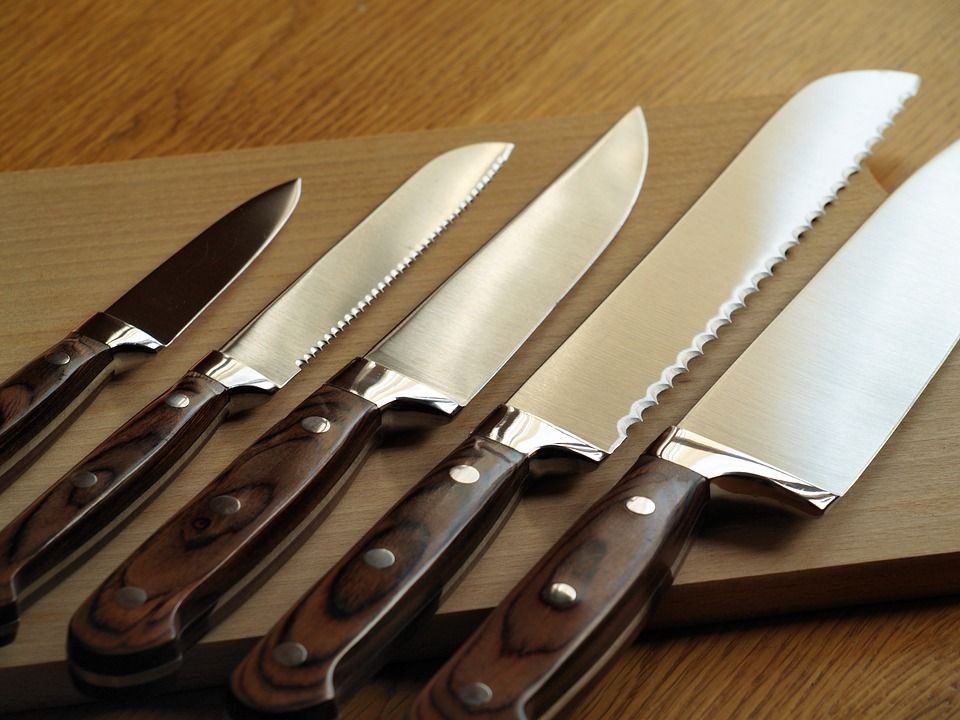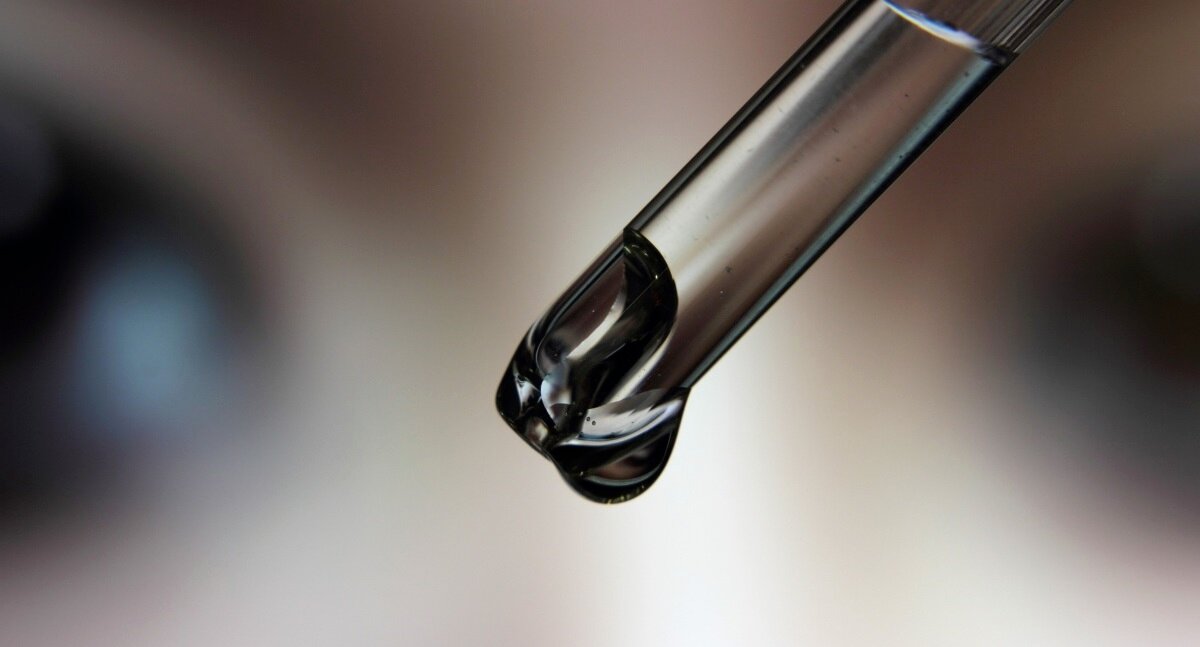Ranking of the best kitchen knives in 2024
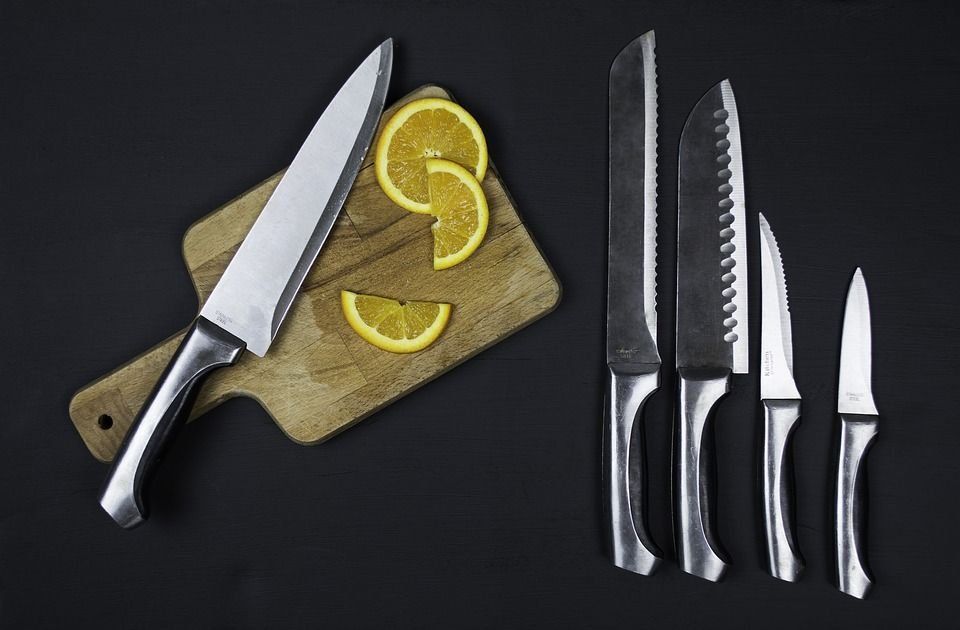
Progress cannot be stopped. Now, he is already in full swing in our kitchens, where many different devices have appeared from a blender to a multicooker. Human participation in food preparation is reduced to pressing a single button. And you get used to it very quickly, as to everything useful and pleasant.
And yet there are irreplaceable items. Knives belong to them. Moreover, it is better to have several of them for different products. After all, any housewife knows that with a knife for peeling vegetables and fruits, it is quite difficult, for example, to cut the right steaks from meat. Therefore, the kitchen must have a high-quality basic kit. It is completely different for everyone.
The main types of knives
- Povarskoy (chef)
The most versatile. A knife with a wide, up to 4.0 cm, long, 17-30 cm, blade that turns into a sharply sharpened tip and a wide blade. The length of the handle is powerful, it can reach up to 20 cm. It has good balance and functionality. They can do everything: cut meat, chop minced meat, shred cabbage, chop greens, cut vegetables and crush garlic, and then also transfer the already cooked food on a wide blade into a bowl. The length of the blade allows you to quickly cut vegetables and herbs without lifting the tip of the knife from the board. It can be called one of the most basic and indispensable kitchen tools.
- Universal
It is the most popular. Blade up to 20 cm long, medium in width, straight. It cuts equally well both vegetables and fruits, as well as meat and fish products. Not suitable for very soft or very hard foods only.
- Khlebny

Long, up to 20 cm, not very wide with a straight blade and a serrated (serrated) blade. Due to the shape of the blade, the knife copes well with any bread crust and other baked goods. Besides bread, it is also suitable for slicing melons and watermelons.
- For vegetables and fruits

The smallest knife in the kitchen, but this does not affect its functionality at all. The length of his blade is only 7-10 cm with smooth edges, a sharp tip and a longer and wider handle. They can perfectly cut any fruits and vegetables.
- Fillet and boning

The boning knife is suitable for separating the pulp from the bone. It has a rather long, up to 15 cm, narrow and flexible blade, which turns into a very sharp, curved tip. This blade shape allows it to better penetrate the pulp and gently separate it from the bone.
A fillet knife is very similar to a boning knife, but has a wider purpose. Its blade is longer up to 30 cm and thinner. So it is more convenient to remove the veins and separate the film from a ready-made piece of meat, or skin from fish and poultry fillets. He is also great at slicing thin slices from the loin.Often the knife is not used entirely for its intended purpose; it is great for serving. Slices of ham or fish cut with it are flawlessly smooth and thin.
- Cleaver

A cleaver or kitchen hatchet is needed for chopping meat with bones, or frozen food. But this is not its only function, if you get used to it, then it will become indispensable for cooking chopped cutlets and chopping greens. It is very different in appearance from ordinary knives, having a wide almost rectangular blade and a powerful handle.
- Santoku
Japanese chef knife. Versatile, it can be used to do almost anything in the kitchen. Although at first it was intended exclusively for butchering meat. Although the chef and the santoku are similar in purpose, they look different. The Santoku is lighter and smaller than the European chef's knife, but the main difference is in the tip of the blade, in the Santoku it is lowered down. This arrangement allows you to use the entire surface of the blade. Some santoku have notches on the sides along the entire blade so that the products do not stick to the surface when cutting. The length of the santoku blade is 12-20 cm. The blade and the handle are perfectly balanced with each other.
- For cleaning vegetables
A vegetable knife has a small blade, up to 10 cm long, a thin blade, a straight or curved tip and a more powerful handle. Such a handle fits comfortably in the hand, and it perfectly peels vegetables and fruits. In addition to their direct responsibility, they can remove eyes from potatoes, cut tails from zucchini and radishes, or carefully cut small vegetables and fruits into slices.
Special types of knives
- Cheese

You rarely meet him in our everyday life. It is a not very long, up to 20 cm blade with holes, serrated (serrated) blade and a forked tip resembling a fork. It is customary to cut soft types of cheese with such a knife. Thanks to the slots on the blade, the cheese will not stick to it, and with the forked tip it is convenient to transfer the already cut pieces of cheese to the plate.
- For pizza

An irreplaceable attribute for pizza lovers. It is a rotating disc with fine teeth, it is with such a device that you can easily cut a hot pizza with melted cheese into even triangles.
- Sandwich
Designed exclusively for soft foods. A medium sized blade with a slightly rounded tip, which is very convenient for spreading butter or pate on bread.
- For oysters

Narrow knife. There are several types. All of them have a very strong, thin and flexible blade, sharpened evenly on both sides. The handle of the knives has a protective guard so that the hand cannot come into contact with the blade.
- The French knife has a wedge-shaped blade, very small in size with a handle much longer. They can open a tight shell rather safely.
- The Boston knife has a pear-shaped blade, one of the sides of which has small teeth. It is just like this that it is very convenient to open small shells with clams.
- Chispyk knife, for medium-sized oysters. It differs slightly from the previous two. Its shape resembles a classic thin tapered blade with an oval handle.
- The Galveston knife, the most impressive of the oysters, is designed for large shellfish.
- Kitchen scissors
One of the favorite items of any housewife. They do an excellent job with butchering poultry or fish. Poultry and fish scissors have slight differences between them.
So, a poultry knife is more like a pruner with a slightly curved blade and notches at one end. It is they who help not to slide off the carcass of a chicken or rabbit. Scissors crush bones of any bird and rabbit without much difficulty.
The fish scissors have shorter blades and powerful handles. Easily deal with fish fins, tail and bones.
There is a universal version of the scissors that is equally suitable for all tasks. If desired, you can also cut greens with them.
- For carving

Special tools that can create unique flowers and other bizarre shapes, and sometimes make fabulous compositions of fruits and vegetables.
- Reversible spoon noisette. Device for cutting out hemispheres and balls.
- Die-cutting, designed to remove the core, mainly from apples.
- Sickle Knife - Using a very sharp, sickle-shaped blade, cuts large details on vegetables and fruits.
- Thai knife, the main subject of carving. It looks like a sickle, but with a thinner blade.
- Carb knives. With a blade of different widths and a triangular tip, they can cut fancy leaves.
- Oval knives, respectively, having an oval cross-section at the tip. Make semicircular cuts.
- Special scissors that can give the edges any decorative shape.
- Fat. A special device for handling cheese.
The knife consists of only two parts: a blade and a handle. Good knives should be made from quality materials.
Materials from which knives are made
The main material from which the blades are made is steel, an alloy of iron and carbon with the inclusion of other chemical elements that can significantly change the characteristics of steel.
High carbon steel
It contains a large percentage of carbon. It increases the hardness of the blade and at the same time reduces its ductility.
- high hardness;
- there is no need to sharpen frequently;
- very sharp.
- more fragile;
- corroded;
- more thorough care is required (after each use, wipe dry);
- metal oxidizes, which affects the taste of the food.
Stainless steel
It contains more chromium and molybdenum, which reduce corrosion and rust formation and increase the strength of the steel.
- more plastic;
- less susceptible to corrosion.
- the need for frequent sharpening.
Ceramic
Such knives began to be produced not very long ago. They are made of zirconium dioxide, from which they are molded, after which they are fired at a very high temperature for two days. Because of the processing technology, they are called ceramic.
- very light;
- very sharp;
- require sharpening for a very long time;
- do not oxidize;
- do not absorb foreign odors;
- excellent slicing quality.
- you can not cut solid products;
- very fragile;
- can only be used on wooden or plastic surfaces;
- it cannot be used for shredding or chopping;
- should be stored separately from other cutlery;
- are afraid of sudden changes in temperature;
- high cost.
Damascus steel
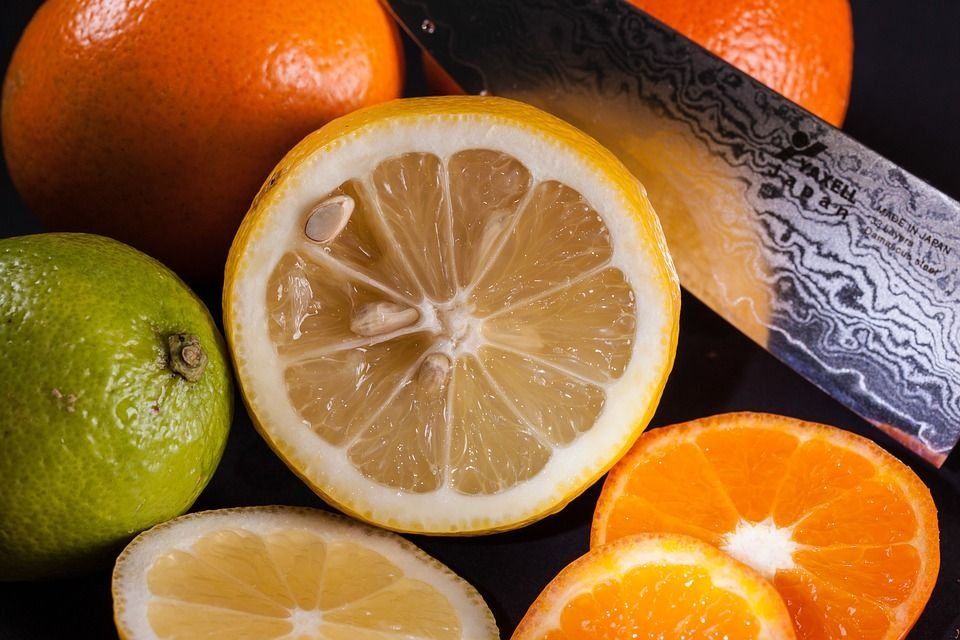
Such steel is made by multiple forging. In production, different types of steel are used, alternating steel with different amounts of carbon, and there are more layers of high-carbon than those with low carbon content. The combination of such a multi-layer allows achieving hard and at the same time elastic steel. With such an overlay of layers and their alternation with special forging, intricate patterns are formed on its surface, which are the hallmark of Damascus knives.
- excellent cutting properties;
- high strength.
- high price.
Titanium
Produced from an alloy of titanium powder, zirconium oxide and silver ions. The powder material is subjected to high-temperature firing and blade shape is made under very high pressure.
- very light;
- sharp;
- not subject to corrosion;
- hypoallergenic.
- very expensive.
Handle material
The handle of the knife must have an ergonomic shape, be comfortable so that the hand does not get tired during prolonged use.Whatever material the handle is made of, its covers must be very firmly riveted, there must be no gaps between them and the blade. Here you can recall a well-known proverb and paraphrase it a little: Just as a brush is an extension of an artist's hand, so a knife should be an extension of a cook's hand.
Wood
The most widely available material for making knife handles. Due to improper care, the tree can either swell or dry out, so it is necessary to check whether there is a gap between the handle and the blade, it is there that food debris accumulates, which are a source of reproduction and development of bacteria.
- light weight;
- does not slip in the hand.
- fragility;
- the ability to absorb odors;
- ability to absorb moisture.
Plastic
The most common material for knife handles due to its properties.
- ease of care;
- does not absorb odors;
- does not get wet;
- hygienic;
- durability;
- convenient.
- afraid of high temperatures;
- only work with dry hands.
Metal
For the metal handle, mainly stainless steel, titanium and aluminum are used. All-metal products are often made. This is a big plus, they do not get loose and do not break. A metal handle is usually made hollow, filling the void with sand for better balance.
- light weight;
- corrosion resistance;
- strength.
- difficult to work without an anti-slip coating.
The best knife manufacturers
On the market for the production of kitchen knives, there are two main directions - European and Japanese. Although in reality the differences between them are not so great and are reduced mainly to the differences between the European chef knife and the Japanese santoku. All knives are made of extra strong steel, according to the Rockwell scale, the hardness of European knives is up to 60 units, for Japanese knives - up to 62. The main difference is sharpening. For Europeans, it is bilateral (at an angle of 20 degrees), and for the Japanese, it can be both one-sided and bilateral (at an angle of 15 degrees).
Wusthof
German family-owned company specializing in the production of knives from forged and rolled steel. In their catalog you can find both expensive series and very budgetary ones, which in no way affects the quality of the products.
Epicure Series
| Knife type | Price, rub. | ||||
|---|---|---|---|---|---|
| Povarskoy 20 cm | 16990 | ||||
| Santoku 17 cm, with grooves on the hem | 15900 | ||||
| For bread 23 cm | 15990 | ||||
| For steak 12 cm | 10590 | ||||
| Vegetable 9 cm | 10290 | ||||
| 6-piece set with stand | 89990 |
- forged steel is used;
- durability;
- excellent cutting properties;
- convenience of the handle;
- monolithic construction.
- high cost.
Classic series
| Knife type | Price, rub. | ||||
|---|---|---|---|---|---|
| Povarskoy 20 cm | 8890 | ||||
| Santoku 17 cm, with grooves on the hem | 8890 | ||||
| For bread 23 cm | 8490 | ||||
| For steak 12 cm | 4990 | ||||
| Vegetable 9 cm | 4990 | ||||
| 7-piece set with stand | 24990 |
- use of forged steel;
- excellent cutting qualities;
- shockproof handle;
- double-sided sharpening.
- relative high cost.
Zwilling J.A. Henckels
A German company that has been making high quality knives for over 250 years. Knives are produced from high-strength steels, with very sharp blades, with optimal balance and ergonomic handles. They specialize in premium knives.
Professional S
| Knife type | Price, rub. | ||||
|---|---|---|---|---|---|
| Povarskoy 20 cm | 9060 | ||||
| Santoku 17 cm, with grooves on the hem | 8975 | ||||
| For bread 20 cm | 8040 | ||||
| For steak 12 cm | 5300 | ||||
| Vegetable 10 cm | 4600 | ||||
| 6-piece set with stand | 25460 |
- one-piece steel billet;
- forged;
- seamless geometry;
- optimal balance.
- high cost.
Arcos Hermanos S.A.
Spanish manufacturer of knives and kitchen utensils made of rolled and forged steel with a centuries-old tradition.
Universal Series
| Knife type | Price, rub. | ||||
|---|---|---|---|---|---|
| Povarskoy 20 cm | 2300 | ||||
| Santoku 17 cm, with grooves on the hem | 2820 | ||||
| For bread 20 cm | 1807 | ||||
| Universal 13 cm | 1383 | ||||
| Vegetable 7.5 cm | 976 | ||||
| 3-piece set with stand | 5717 |
- high quality stainless steel is used;
- excellent cutting properties;
- double-sided sharpening;
- ergonomic handle.
- not found.
Gipfel

A German brand, the company has been producing dining and kitchen items for more than a dozen years.
| Knife type | Price, rub. | ||||
|---|---|---|---|---|---|
| Laffi Chef Series 20 cm | 1104 | ||||
| Santoku 18 cm | 306 | ||||
| For bread Legion series 20 cm | 350 | ||||
| For steak Colombo series 14 cm | 703 | ||||
| Vegetable series Colombo 9 cm | 588 | ||||
| 5-piece set with stand | 1776 |
- high security;
- good cutting properties;
- resistance to deformation;
- anti-slip grip;
- does not require frequent sharpening
- made of stainless or high carbon steel.
- not found.
Samura
A Japanese company that began operations in 2003 and has achieved tremendous success in production over a decade. Knives are often made by hand. Along with metal knives, knives from Damascus steel, Samura has established the production of ceramic knives. The knives of this company are of guaranteed quality.
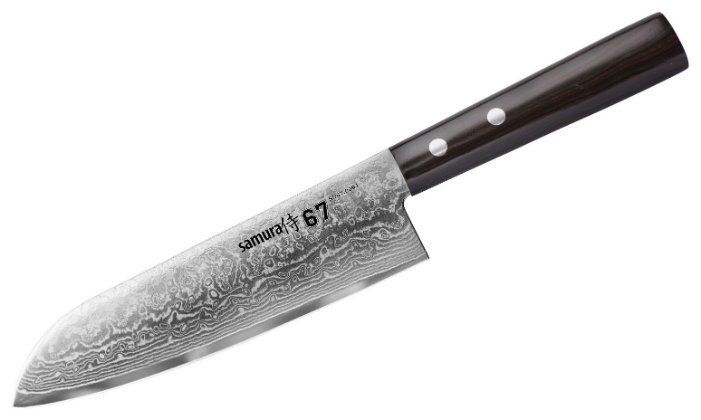
Damaskus series
| Knife type | Price, rub. | ||||
|---|---|---|---|---|---|
| Chef 20 cm | 11320 | ||||
| Santoku 18 cm | 11515 | ||||
| For bread 23 cm | 10550 | ||||
| For steak 12 cm | 5040 | ||||
| Vegetable 7.5 cm | 4320 |
- made of forged steel;
- ergonomic handle;
- excellent cutting performance;
- durability.
- relative high cost.
Harakiri Series
| Knife type | Price, rub. | ||||
|---|---|---|---|---|---|
| Chef 21 cm | 1900 | ||||
| Santoku 30 cm | 1140 | ||||
| Universal 26 cm | 1010 | ||||
| Vegetable 10 cm | 935 | ||||
| 3-piece set with stand | 4150 |
- specialized alloy steel;
- anti-corrosion properties;
- excellent performance characteristics.
- not found.
Tojiro
A brand of Japanese company Fudjitora industry Co., Ltd, is engaged in the production of professional and household kitchen knives. The blades are made from both multilayer stainless steel and forged.
| Knife type | Price, rub. | ||||
|---|---|---|---|---|---|
| Chef 18 cm | 12000 | ||||
| Santoku 18 cm Series | 6960 | ||||
| For 23 cm bread Western series | 2500 | ||||
| Vegetable 8 cm Western series | 4260 |

- ergonomic handle;
- excellent cutting performance;
- safety;
- durability.
- high cost.
How to choose
Everyone chooses a knife for themselves. The main task of a good knife is that the hand does not get tired during prolonged work. This is influenced by several factors. It is necessary to check the balance of the knife - it can be shifted towards the tip of the blade, it can be in the center, where the handle is connected to the blade, or it is shifted towards the handle, the choice of the best option is always yours.
The next most important is the comfort of the handle. It should fit into your hand and feel comfortable when holding the knife.
Pay special attention to the blade of the blade, the quality of the steel from which it is made, the knife should remain sharp as long as possible. As paradoxical as it sounds, the sharper the knife, the safer it is. It's easier to cut yourself with a blunt knife.
How many knives to buy, individually or as a ready-made set, depends on how much you love to cook. By choosing a ready-made kit, you will save time and money. But for people who spend a lot of time in the kitchen, it is better to select each knife directly for themselves. Usually three knives are enough for the right kitchen set. This kit usually includes: a chef's (chef's knife), a bread knife with a serrated sharpening and a vegetable knife. You can do almost all the work with a chef knife, peel and even cut vegetables and fruits with a vegetable knife, and use a bread knife for its intended purpose. Although this configuration can also be changed according to your preferences.
Main selection criteria
- The handle of the knife must have an ergonomic shape, fit comfortably in the hand, do not slip, it is possible to have some indentations for the fingers;
- The blade should be sharp and easy to cut any food;
- The blade of the blade must remain sharp for a long time.
How to store

Where to store kitchen knives and how? Another must-see point to which you need to pay attention. Everyone wants knives to last longer. For this, there are special containers, stands, magnetic holders. It is they who ensure the careful and hygienic storage of kitchen knives.
Output
You shouldn't save on knives. Buying a quality knife thus you make a certain investment, providing yourself with the right kitchen tool for more than one year.Spending enough time in the kitchen cooking, you should experience maximum pleasure, and with a bad knife you will not get such emotions. We hope this article will help you make the right choice.
new entries
Categories
Useful
Popular articles
-

Top rating of the best and inexpensive scooters up to 50 cubic meters in 2024
Views: 97661 -

Rating of the best materials for noise insulation for an apartment in 2024
Views: 95022 -

Rating of cheap analogues of expensive medicines for flu and colds for 2024
Views: 91751 -

The best men's running shoes in 2024
Views: 87681 -

Top ranking of the best smartwatches 2024 - price-quality
Views: 85091 -

Best Complex Vitamins in 2024
Views: 84801 -

The best dye for gray hair - 2024 top ranking
Views: 82406 -

Rating of the best wood paints for interior use in 2024
Views: 77202 -

Ranking of the best action cameras from China in 2024
Views: 75269 -

Rating of the best spinning reels in 2024
Views: 74827 -

The most effective calcium supplements for adults and children in 2024
Views: 72463 -

Top rating of the best means for male potency in 2024 with a description
Views: 68296
